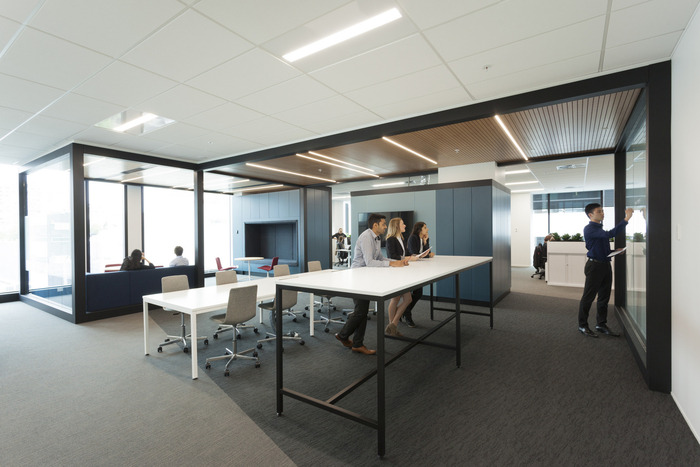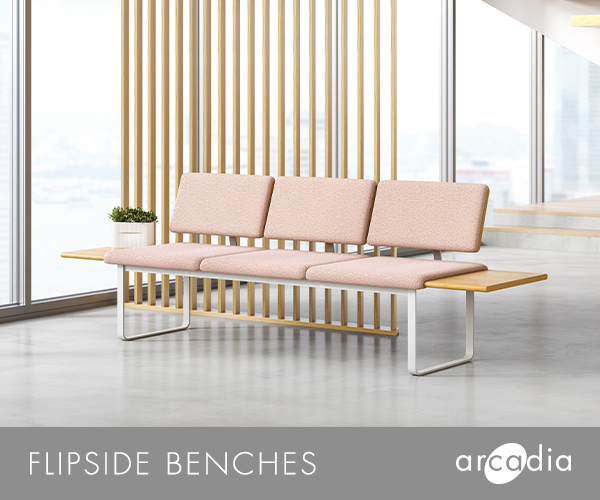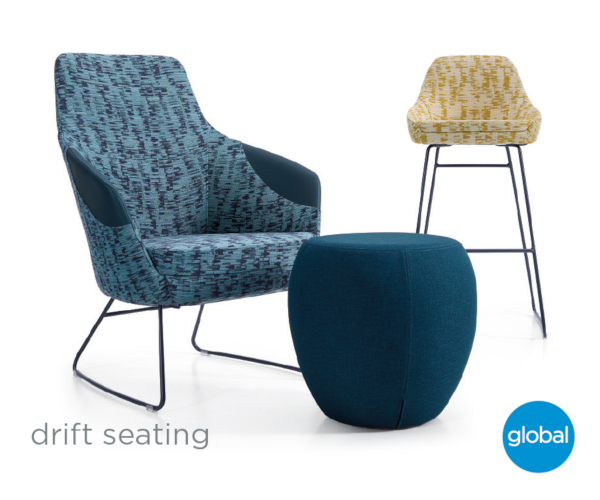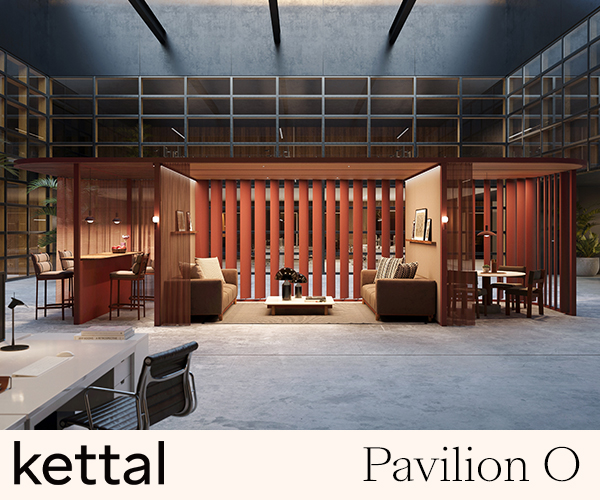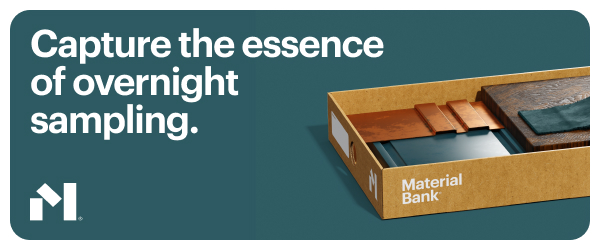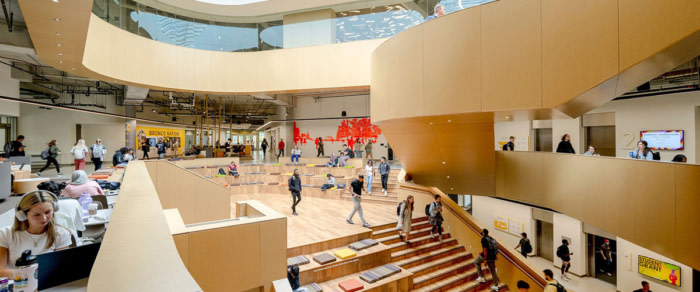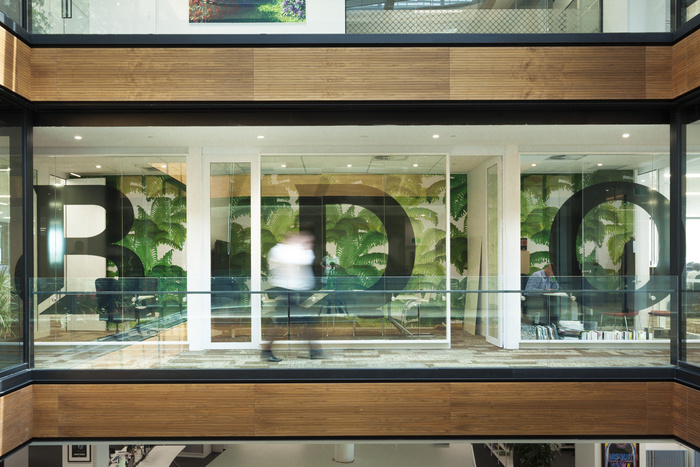
On Collaboration: An Interview with Jesse Smith and Lara Stancich of STACK
“On Collaboration” is an editorial series of interviews investigating the concept of collaboration in the modern workplace.
In the 9 years since Office Snapshots began publishing, we’ve watched the idea of the collaborative office rise to the level of an almost meaningless buzzword. But collaboration – working together to achieve a goal or complete a task – is an essential ingredient in any workplace that will not disappear any time soon.
—
We recently spoke with both Jesse Smith and Lara Stancich — senior designers at Stack in New Zealand, who have designed offices for companies like Maersk, MediaWorks, and BDO. They tell us about what collaboration in the contemporary office landscape looks like and how the firm works to help clients create an environment which matches the unique needs of each organization.
—
What does a collaborative office space look for a client of Stack? Is it different depending on the company?
Collaboration means different things to different businesses. Understanding why a business is seeking a more collaborative workplace helps define the spaces in a more meaningful way.
Here in New Zealand, especially with our coffee culture, collaboration generally always includes sociability. It’s less stale meeting rooms and more natural ‘human’ collaboration spaces.
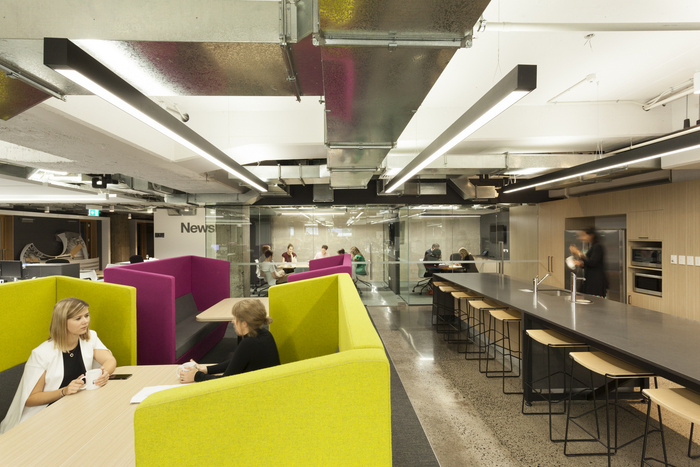
MediaWorks’ Offices by Stack
Do companies ask you for a “collaborative office” or do those needs present themselves through discussions about what their needs are.
It’s a mix of both. We think it’s important to understand what people really mean when they ask for a collaborative office. What type of collaboration do they want: email, phone, face-to-face, meetings, socialising, brainstorming? Where do they want to collaborate: at a desk, away from desks, in a secluded space, in the open? How do they want to collaborate: out in the open, using technology, or in a clean room, a more human space?
Which means there’s a huge variety of collaborative offices available– but they’re all valid.
Maersk line shipping required single agile space where informal meetings, brainstorming, scheduling, presenting and project teamwork would naturally occur. Within the same area various settings bounded with container like structures allow large or small group seated working, touchdown/ project team desking with led display and “catchup” leaners with brainstorming walls.
Maersk Line Offices in Auckland by Stack
Photo by Rebecca Swan
We often see companies thinking of collaboration as “putting employees in an open plan and watch them collaborate”. Do you find that there are misconceptions about what collaborative work environments are?
Definitely. We think there’s a tendency to confuse ‘interaction’ with ‘collaboration’. To us, collaboration is a specific goal-orientated activity, often with a planned beginning, facilitation to make it happen and a desired outcome. Interaction however tends to be casual, unplanned, social and temporary and may naturally occur in an open plan environment. Increased interaction can help foster increased collaboration – but it’s not a given.
For MediaWorks a leading NZ Media Agency & Newsroom, breaking down the existing physical barriers was the first step in achieving greater collaboration, speed to market and leadership visibility. Collaboration is always occurring ‘live’ and unseen via desktop technology but now instantaneous face to face decision making on breaking news happens more quickly around stand up desks. Booth seating along corridor routes are also used as ‘dropins’ for short impromptu catch-ups.
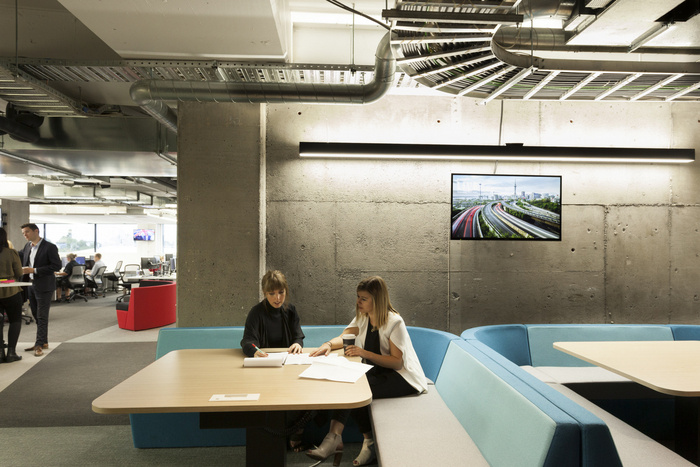
Drop in booths at MediaWorks’ Offices
Is the actual act of collaborating something that is design-driven or culture-driven? Or both?
Often when a company talks with us they already have a fairly collaborative team and are just lacking the tools or spaces to communicate ideas meaningfully and effectively. Other times they’re a business looking to achieve a cultural shift to a workplace where teamwork is more visible and celebrated. At our recent project for BDO in Auckland, we enhanced business sociability by assigning all informal meeting spaces into the café area. The furnishings which range from high back semi private booths, bench seating to accommodate 1 or 20 people at a time and benchtop leaners all have a comfortable and informal aesthetic. Other more formal collaboration often involving video conferencing takes place in elsewhere purpose built centralised meeting rooms.
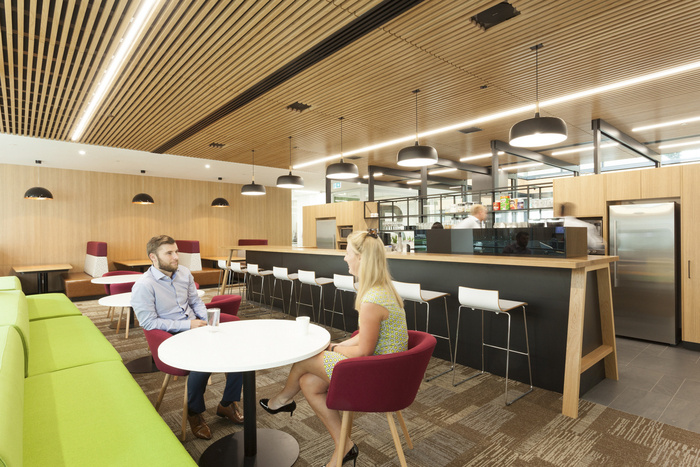
Informal meeting space in BDO’s cafe
Do you have any other thoughts about what a collaborative office environment is or isn’t or should be?
Without collaboration there would be no need for an office at all. A good office environment always facilitates collaboration in natural meaningful ways. Whilst Collaboration spaces may present opportunities for designers to be bold and innovative, they should always include the right technology and atmosphere conducive to the kind of collaboration that will naturally occur. When collaboration is encouraged at or near the desk then additional focus spaces and even private collaboration spaces must also be provided in order to get some clear thinking when needed and ensure the right “two cents worth” are added.
